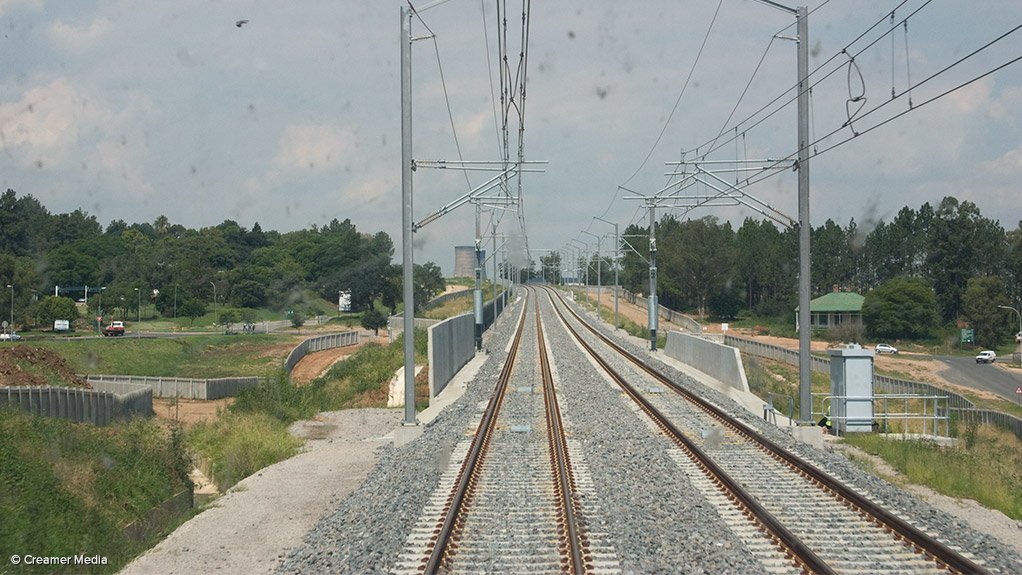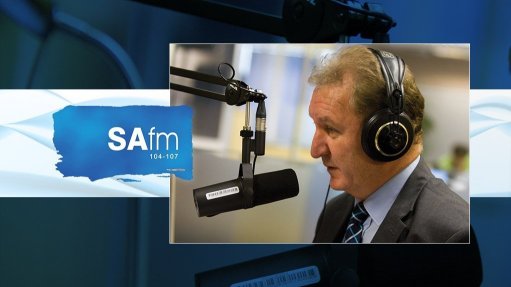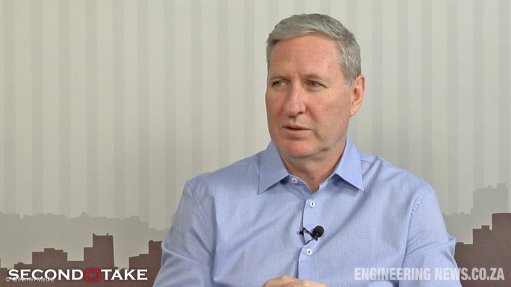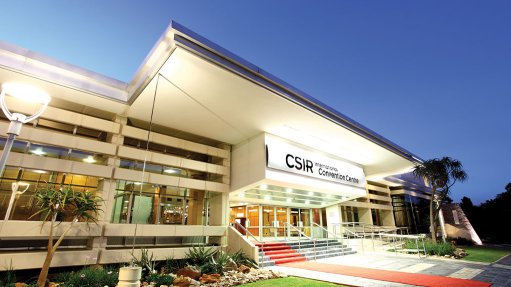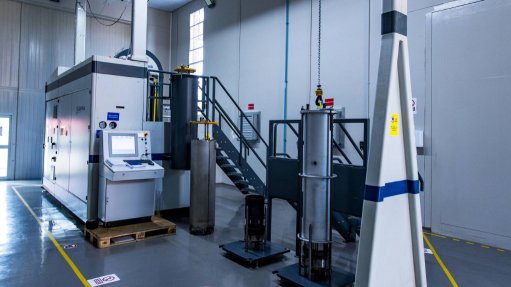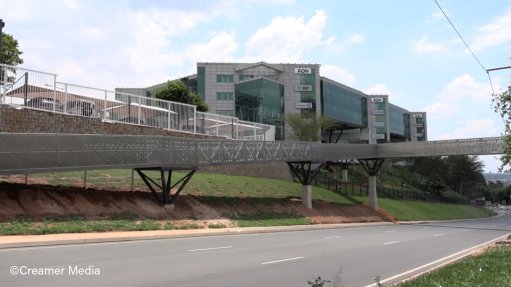New single structure to be established that will govern State participation in PPPs
Note: This article has been written on the basis of documents provided to the media during the 2025 Budget lock-up prior to the cancellation of the Budget Speech on February 19. The National Treasury has lifted the embargo imposed on the information, but a new Budget is now due to be tabled on March 12.
A single structure overseen by the National Treasury will be established during the 2025/26 fiscal year to coordinate State participation in project preparation and planning, public-private partnerships (PPPs), funding and credit guarantees, Finance Minister Enoch Godongwana noted in documents accompanying his undelivered February 19 Budget speech.
This forms part of several reforms currently underway to help the State deliver infrastructure and encourage further private-sector investment.
Godongwana said the new structure would include the three spheres of government and public entities, and would merge two units currently in the Government Technical Advisory Centre that coordinate PPPs and capital appraisals with the Infrastructure Fund in the Development Bank of Southern Africa (DBSA).
“The new regulations also make provision for national departments to establish sector-specific units PPPs. This is modelled after successful programmes like the Independent Power Producers Office, and will allow individual units to manage public-private projects within their domains,” he said.
Godongwana explained that infrastructure reforms were underpinned by the State’s commitment to significantly increase partnerships with the private sector.
On February 7, critical amendments to Treasury Regulations for PPPs were gazetted. As such, from June onwards, projects below a total value of R2-billion will no longer have to clear onerous approval processes intended for large projects before proceeding.
Godongwana said that the June 1 implementation date was set to allow sufficient time for institutions to familiarise themselves with the amendments as well as the enabling FCCL and unsolicited bid proposal guidelines that support these changes. In addition, he promised that institutions would receive training on the new amendments before their effective date.
Godongwana further confirmed that National Treasury would update the PPP manual to reflect the new amendment requirements as well as the modules recommended for revision, as outlined in the PPP review.
Additionally, sector-specific toolkits are being developed, starting with priority sectors such as water and sanitation, tourism, electricity and accommodation. These updates are expected to be completed during the year ahead.
As part of these reforms, Godongwana said that a clear framework had been established to receive and process unsolicited PPP proposals or bids from the private sector. Also, revised manuals and guidelines on PPPs are being produced and will be made available to the public in due course.
He added that new legislative amendments and regulations for municipal PPPs would also be introduced in the year ahead.
The amendments to the PPP framework were meant to simplify processes and reduce delays, with efforts focused on improving investment in transport, communication, water and energy to reduce costs, boost efficiency and raise productivity, Godongwana said.
Other PPP reforms underway involve pooling resources with the private sector in blended finance initiatives aimed at funding and implementing infrastructure projects more effectively. The reforms also include reviewing the institutional arrangements to fast-track delivery of strategic infrastructure, enhancing infrastructure monitoring and reporting – including on PPP contingent liabilities – and building a strong project pipeline.
In 2023, both public- and private-sector investment increased as a percentage of GDP. Public-sector capital investment increased from 3.8% in 2022 to 4.1% in 2023, while private-sector capital investment rose from 10.3% to 10.8% of GDP. Nonetheless, Godongwana acknowledged that much faster growth was needed to expand the economy and reduce unemployment and poverty.
Over the past decade, weak growth, rising spending pressures, inefficient delivery and the financial support provided to State-owned companies have constrained government’s ability to optimally invest in infrastructure.
Between 2013 and 2023, public-sector capital investment averaged 5.1% of GDP, while private capital investment averaged 10.9% of GDP. Higher total investment, measuring 14.9% of GDP in 2023, remains well below the National Development Plan target of 30%.
To reach this target, public-sector investment in infrastructure would need to grow to 10% of GDP by 2030, while private-sector investment would need to grow to 20% in 2030. Bridging the infrastructure investment gap requires developing innovative approaches to leverage private-sector finance, making the necessary regulatory changes and improving infrastructure planning across government to build a pipeline of projects.
Godongwana believes that the broad reforms in infrastructure provision will unlock this potential.
However, he noted that legislative changes would not alone be sufficient in crowding in private-sector investment. As such, he said that National Treasury was working on various enabling mechanisms to support the legislative amendments.
Among these, National Treasury aims to strengthen the capacity of its regulatory function, which oversees and approves all PPPs, as this function is important for gatekeeping, timely approvals, transparency and fiscal oversight.
In addition, further work is being done to explore options to bridge the affordability gap for PPP projects through budget processes. Funding mechanisms and other interventions need to be in place early to minimise delays in moving projects from contract to financial close.
PPP PROJECTS GOING TO THE MARKET
Godongwana’s Budget highlighted 35 PPP projects at different stages of development: 11 projects in the inception phase, 11 in the feasibility study phase and 13 in the procurement stage.
“This distribution highlights the ongoing interest and commitment of public-sector institutions in the PPP market. Given budget constraints, the PPP model offers a viable alternative for these institutions to access private-sector financing and expertise.
“Additionally, the amendments to the PPP regulatory framework will enable greater private-sector participation in public-sector infrastructure projects by reducing the procedural complexity in implementing PPPs. The creation of two pathways for PPPs, one for high-value projects and a simplified version for low-value projects, will incentivise the commencement of smaller PPP projects,” Godongwana said.
Among the notable PPP projects underway is the R9.1-billion Redevelopment of Ports of Entry project, which aims to reduce delays experienced by passengers and vehicles at six inland borders that South Africa shares with its neighbouring countries.
The project will facilitate the efficient movement of goods to improve regional trade. The Department of Home Affairs (DHA) will enter into a PPP agreement with a private party to design, build, operate and finance the redevelopment of the identified ports of entry.
Godongwana said that the DHA has made significant progress in the procurement process, with the request for proposals submission period now closed.
Both the department and the Border Management Authority are currently evaluating the submissions, with support from various stakeholders such as the National Treasury, the DBSA, the Infrastructure Fund and Infrastructure South Africa.
The Gautrain Rapid Rail Link System was also highlighted. This 80-km rapid rail system, in Gauteng, links the cities of Johannesburg, Tshwane and Ekurhuleni.
The current Gautrain concession ends in March 2026, and so the provincial government intends to implement new arrangements to ensure continuity of the current service while improving the quality, affordability, accessibility and sustainability of the system.
This project is at the evaluation stage and is expected to reach the stage of application for Treasury Approval IIB in the 2025/26 fiscal year. Godongwana believes that the project will reach financial closure towards the end of the fiscal year.
Another key PPP project is the Inkosi Albert Luthuli Central Hospital, which is an 846-bed referral hospital that serves the whole of KwaZulu-Natal and part of the Eastern Cape.
The 15-year PPP agreement is coming to an end, and the provincial government is undertaking a new PPP arrangement to ensure continuity of the current service while making improvements to the system.
The project reached financial closure in the previous fiscal year, and the new PPP agreement was signed on May 28 last year. The project is now in its implementation stage.
Godongwana also pointed to the R18.1-billion Salvokop Government Precinct, which is a mixed-use development that includes the construction of offices for four national government departments in Pretoria’s inner city.
Four PPP projects are registered for this precinct, each at different stages of development. These include Home Affairs at the Treasury Approval I stage, Correctional Services and Social Development at the feasibility study stage, and Higher Education at the inception stage.
The subsequent phases will include other commercial uses by the private-sector and mixed-typology housing. The government precinct will be supported by other land uses, including residential, office, commercial, retail, recreational and services.
Article Enquiry
Email Article
Save Article
Feedback
To advertise email advertising@creamermedia.co.za or click here
Comments
Announcements
What's On
Subscribe to improve your user experience...
Option 1 (equivalent of R125 a month):
Receive a weekly copy of Creamer Media's Engineering News & Mining Weekly magazine
(print copy for those in South Africa and e-magazine for those outside of South Africa)
Receive daily email newsletters
Access to full search results
Access archive of magazine back copies
Access to Projects in Progress
Access to ONE Research Report of your choice in PDF format
Option 2 (equivalent of R375 a month):
All benefits from Option 1
PLUS
Access to Creamer Media's Research Channel Africa for ALL Research Reports, in PDF format, on various industrial and mining sectors
including Electricity; Water; Energy Transition; Hydrogen; Roads, Rail and Ports; Coal; Gold; Platinum; Battery Metals; etc.
Already a subscriber?
Forgotten your password?
Receive weekly copy of Creamer Media's Engineering News & Mining Weekly magazine (print copy for those in South Africa and e-magazine for those outside of South Africa)
➕
Recieve daily email newsletters
➕
Access to full search results
➕
Access archive of magazine back copies
➕
Access to Projects in Progress
➕
Access to ONE Research Report of your choice in PDF format
RESEARCH CHANNEL AFRICA
R4500 (equivalent of R375 a month)
SUBSCRIBEAll benefits from Option 1
➕
Access to Creamer Media's Research Channel Africa for ALL Research Reports on various industrial and mining sectors, in PDF format, including on:
Electricity
➕
Water
➕
Energy Transition
➕
Hydrogen
➕
Roads, Rail and Ports
➕
Coal
➕
Gold
➕
Platinum
➕
Battery Metals
➕
etc.
Receive all benefits from Option 1 or Option 2 delivered to numerous people at your company
➕
Multiple User names and Passwords for simultaneous log-ins
➕
Intranet integration access to all in your organisation



